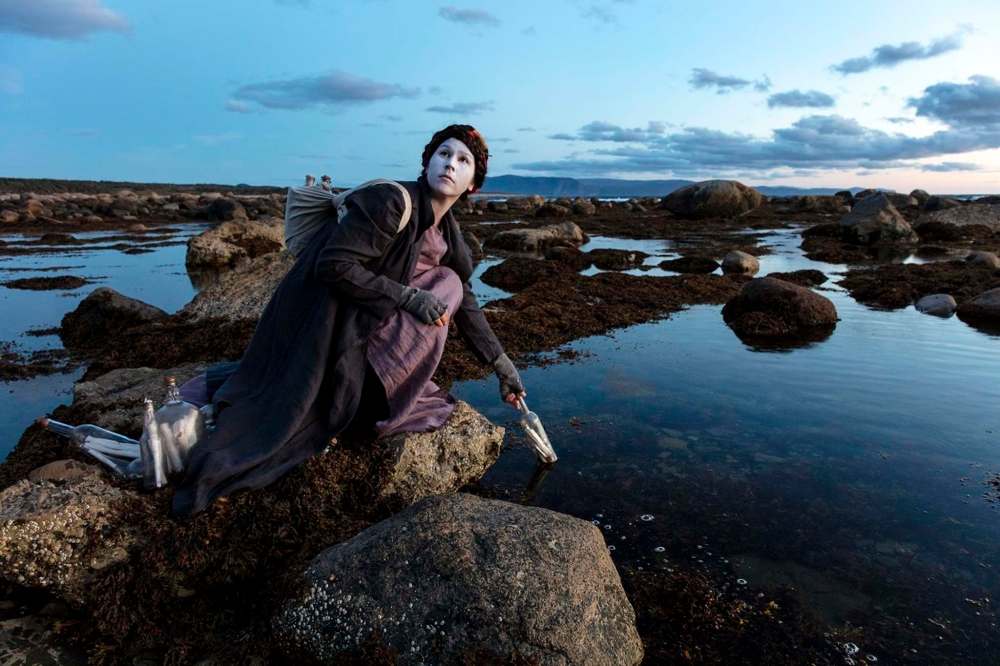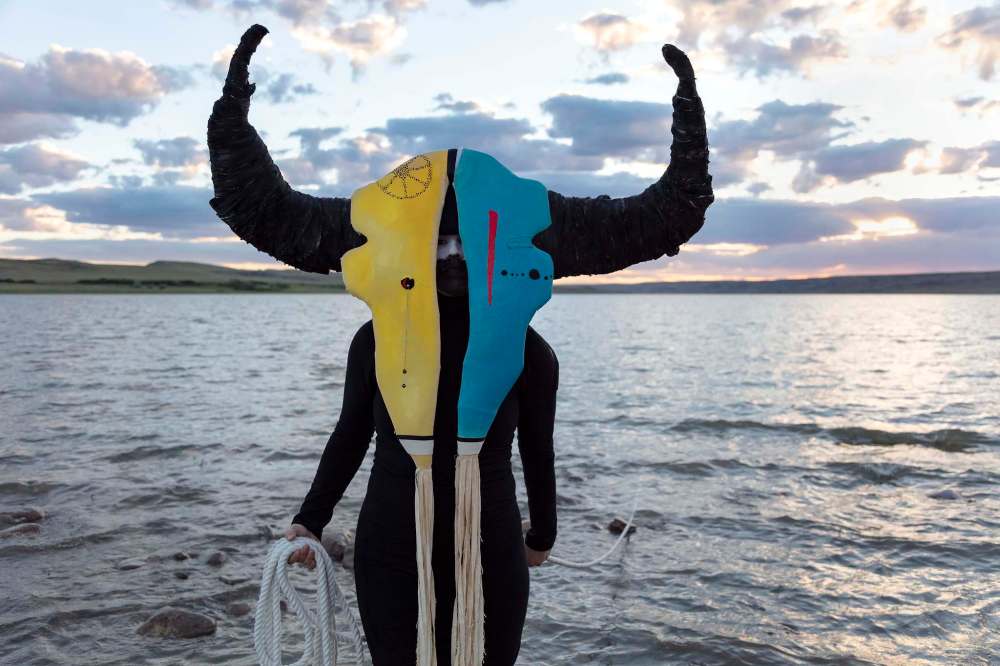Chameleon connecting
Plains Cree artist Meryl McMaster portrays different characters in the photos she uses, along with poetry, storytelling and props, to link to her ancestors and the land
Advertisement
Read this article for free:
or
Already have an account? Log in here »
To continue reading, please subscribe:
Monthly Digital Subscription
$0 for the first 4 weeks*
- Enjoy unlimited reading on winnipegfreepress.com
- Read the E-Edition, our digital replica newspaper
- Access News Break, our award-winning app
- Play interactive puzzles
*No charge for 4 weeks then price increases to the regular rate of $19.00 plus GST every four weeks. Offer available to new and qualified returning subscribers only. Cancel any time.
Monthly Digital Subscription
$4.75/week*
- Enjoy unlimited reading on winnipegfreepress.com
- Read the E-Edition, our digital replica newspaper
- Access News Break, our award-winning app
- Play interactive puzzles
*Billed as $19 plus GST every four weeks. Cancel any time.
To continue reading, please subscribe:
Add Free Press access to your Brandon Sun subscription for only an additional
$1 for the first 4 weeks*
*Your next subscription payment will increase by $1.00 and you will be charged $16.99 plus GST for four weeks. After four weeks, your payment will increase to $23.99 plus GST every four weeks.
Read unlimited articles for free today:
or
Already have an account? Log in here »
Hey there, time traveller!
This article was published 30/03/2021 (1714 days ago), so information in it may no longer be current.
To call Meryl McMaster just a photographer sells the Plains Cree artist terribly short.
Her new show, As Immense as the Sky, which is on display at Urban Shaman gallery until April 17, shows she is also a costumer, a props-maker, a poet and a storyteller.
McMaster is also the focus of her photographs, portraying characters interacting with grand vistas of the Canadian Prairies or the rocky shores of Newfoundland and Labrador. She says she tries to use her artworks to connect with ancestors as a way to introduce herself to the land where they lived.

“The character I portray in my photographs is always changing, depending on the idea behind them,” McMaster, who lives in Ottawa, writes in an email. “I am sometimes exploring unanswered questions I have of myself and the world and sometimes I am embodying a character in a story I have been told.”
McMaster’s works have been displayed across Canada, at the Smithsonian National Museum of the American Indian in Washington, D.C., and in group exhibitions in Europe. Her career took the next step in 2019 when As Immense as the Sky earned her first solo exhibition in Europe, at the Ikon Gallery in Birmingham, England, and it has also been shown at the Australian Centre for Photography in Sydney.
Several of the 16 1×1.5-metre photographs in the show, such as one titled From a Still Unquiet Place, are set in Red Pheasant First Nation in central Saskatchewan, where her father grew up. Others are from Manitoulin Island in Ontario, where her great-grandmother was born.
“Many of the locations I photographed, specifically in Saskatchewan and Ontario, have direct family connections as they are places that my family on both my father’s and mother’s side lived or passed through at one point on their journey,” McMaster says.
One of the exhibition’s key photographs is titled Calling Me Home, and it is part a retelling of a Cree legend and part autobiographical study. McMaster, who also is of English and Dutch heritage, says she wears a yellow-and-blue bison skull that she created and poses on the shore of a lake, carrying a rope that trails into the water.
It includes a poem, which in the exhibition is written in both Cree and English.
“A long time has passed. / The young buffalo child fell from his parent’s travois during travel. / Found and raised by the bison people. / One day he had to choose between his human and bison families. / He could not bear to be with only one, so he chose to become mostos awasis asini for eternity. / The sacred stone mostos awasis asini, rests in the lake,” the poem reads.

“In this image I stand as a re-imagined spirit of the Buffalo Child Stone at the shores of Lake Diefenbaker in Elbow, Sask. The stone is a gathering and sacred place for the Cree,” McMaster says. “This story makes me think of belonging to multiple families and loving both as the Buffalo Child did.
“In 1966 the sacred stone was destroyed in the construction process of this man-made lake.”
McMaster dons several types of headwear in the photographs. Besides the bison skull in Calling Me Home, McMaster created and wears a large black headdress, aan elaborate flower hat and a even a large bird feeder, complete with feathered friends.
“The hardest thing can be building the base of the hat from scratch, as it has to be able to be strong, hold weight, fit my head and not be too visible,” she says. “Sometimes I work off an already existing helmet but for this I didn’t. I worked with wire and cardboard.”
McMaster — or at least the character she depicts — goes back millions of years in a trio of photographs shot on the shores of Newfoundland. Titled Ordovician Tide, they refer to the geological era when Canada’s East Coast was connected the British Isles. McMaster carries bottled messages, trying to create a connection between two worlds that have drifted apart.
To whom the messages are going, though, remains a mystery.

“I like to leave it up to the viewer to decide which they see, as I think I could be sending a message to either (the past or the future),” she says.
alan.small@freepress.mb.ca
Twitter:@AlanDSmall

Alan Small
Reporter
Alan Small was a journalist at the Free Press for more than 22 years in a variety of roles, the last being a reporter in the Arts and Life section.
Our newsroom depends on a growing audience of readers to power our journalism. If you are not a paid reader, please consider becoming a subscriber.
Our newsroom depends on its audience of readers to power our journalism. Thank you for your support.
History
Updated on Tuesday, March 30, 2021 8:47 AM CDT: Formats fact box


